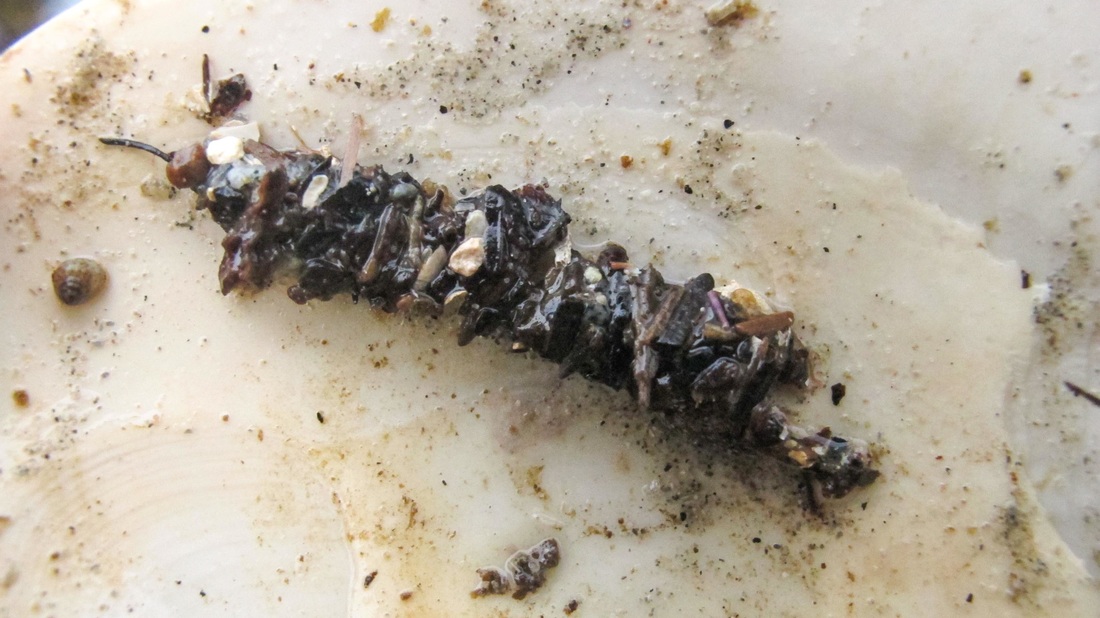Ornate tubeworm • Diopatra oranata
Identification
This tube worm may not look like anything more than a cluster of shell fragments and algae on first glance, due to its tendency to decorate the outside of its permanent tube with such debris. Other materials used in the construction of the ornate tubeworm's permanent tube include mud, sand, sticks, and leaves from terrestrial plants. The tube usually arches up out of the sediment, so the worm inhabiting it may be longer than the tube with the rest of its body burrowed into the sediment. The chitinized inside layer of the tube is similar to parchment. The worm may have its head protruding from the tube, in which case its five antennae and antennae-like sensory structures will be visible.
Habitat & Range
The ornate tubeworm usually builds its tubes in sandy locations near rock outcrops, or in rock crevices. Its lives in the subtidal to 91 m deep, and can be found from BC to northern Mexico.
This tube worm may not look like anything more than a cluster of shell fragments and algae on first glance, due to its tendency to decorate the outside of its permanent tube with such debris. Other materials used in the construction of the ornate tubeworm's permanent tube include mud, sand, sticks, and leaves from terrestrial plants. The tube usually arches up out of the sediment, so the worm inhabiting it may be longer than the tube with the rest of its body burrowed into the sediment. The chitinized inside layer of the tube is similar to parchment. The worm may have its head protruding from the tube, in which case its five antennae and antennae-like sensory structures will be visible.
Habitat & Range
The ornate tubeworm usually builds its tubes in sandy locations near rock outcrops, or in rock crevices. Its lives in the subtidal to 91 m deep, and can be found from BC to northern Mexico.
References
Lamb, A., and Hanby, B. (2005). Marine Life of the Pacific Northwest [electronic version]. Madeira Park, BC: Harbour Publishing.
Watanabe, J. (2014). Diopatra ornata Kinberg, 1865. SeaNet: Common Marine Organisms of Monterey Bay, California. Stanford University, Stanford, CA. Accessed 24/11/2015.
Authors and editors of page
Kelly Fretwell (2015).
Lamb, A., and Hanby, B. (2005). Marine Life of the Pacific Northwest [electronic version]. Madeira Park, BC: Harbour Publishing.
Watanabe, J. (2014). Diopatra ornata Kinberg, 1865. SeaNet: Common Marine Organisms of Monterey Bay, California. Stanford University, Stanford, CA. Accessed 24/11/2015.
Authors and editors of page
Kelly Fretwell (2015).





